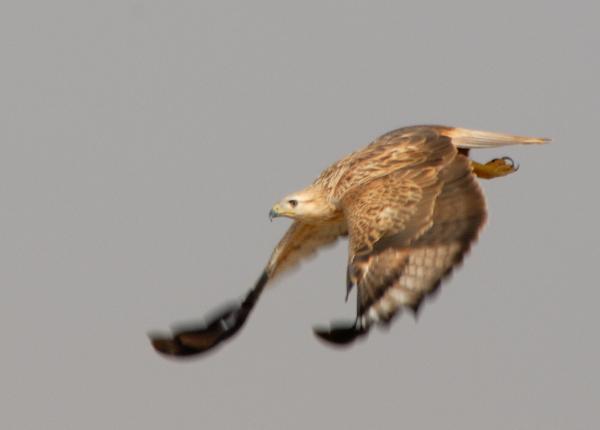Did You Know
- There are two subspecies of the Long-legged Buzzard
- In Romania, researchers observed this species feeding relatively frequently on roadkill
- This species is known to hang around grass fires, hunting small animals fleeing the smoke and flames
How The Peregrine Fund is Helping
Our efforts in scientific research, habitat conservation, education, and community development help conserve birds of prey around the world. We also supply literature to researchers from our avian research library, which helps scientists around the world gather and share important information on raptor conservation. We also run the Global Raptor Impact Network which gives raptor researchers tools to more efficiently conduct their own studies while contributing to a global program. GRIN also provides citizen scientists a way to participate in raptor science and conservation.
Where They Live
The Long-legged Buzzard has a relatively wide geographical range. It can be found in parts of Africa, Europe, and Asia. This bird of prey is not a forest species, but instead prefers to hunt, nest, and otherwise go about its day in more open, drier habitats including desert and semi-desert areas, hilly plains, open meadows, steppes, coastal cliffs, and croplands. Researchers have even observed this bird hanging around near the outskirts of villages.
What They Do
The Long-legged Buzzard tends to spend most of its time by itself or in pairs. However, it has been observed gathering in small flocks near water. This species is diurnal, meaning it is active during daylight hours and rests, or roosts, at night.
Like many raptors, these hawks are top predators – they hunt other animals for food but no animals hunt them on a regular basis. They are unlike snakes, for example, which prey on mice, birds, and other animals but also are preyed upon by animals that feed on them. For most top predators, their only threat is humans. Top predators play an important role in nature by helping to control populations of prey animals and maintain a balance in the ecosystems where they live.
Why They Need our Help
Because the Long-legged Buzzard is common throughout a wide geographical range, it is classified as a species of Least Concern. While researchers have noted a decline in its populations in parts of its range, notable in northern Africa and Arabia, its populations do appear to be increasing in other areas.
What They Eat
Any small to medium-sized mammals living in Long-legged Buzzard territory need to be particularly cautious. This hawk flies over plowed and cultivated agricultural fields, steppe, and deserts, hovering in the sky as it uses its keen eyes to search for movement below. It feeds primarily on rodents, including gerbils, voles, pikas, and ground squirrels, and other mammals such as rabbits, hares, and hedgehogs. But, it will also prey upon birds, snakes, and lizards, toads, beetles, grasshoppers, and locusts when the opportunity arises. If you are ever in Long-legged Buzzard habitat, make sure to look at the tops of power poles, pylons, and dead trees. They can often be seen perched there, even when on the hunt.
Nests, Eggs, and Young
Long-legged Buzzards usually build their own nests, though in some areas they have been known to renovate and use nests built by other bird species. The adults will line the nest with soft materials, including wool, bark and other vegetation. There are several locations to choose from when it comes time to build their nest. They might choose branches in trees, in shrubs, on rocks, rocky precipices, cliffs, or even old buildings.
The female will lay 2-4 white eggs that are covered with reddish-brown markings.The nests will need to be incubated for 28 days before the down-covered nestlings will hatch. When the nestlings are just around 45 days old they will be big and strong enough to fly from the nest for the first time.
Long-legged Buzzard and the World Center for Birds of Prey
The World Center for Birds of Prey offers fun ways to learn about birds of prey. Interactive activities, tours, interesting videos and a children's room with activities from coloring sheets to quizzes to costumes and a touch table are available for the curious mind. We also have several birds of prey on display year-around, including a number of hawk species such as a Red-tailed Hawk and a Harris' Hawk. Knowledgeable staff and volunteers are on hand to answer any questions you may have about Long-legged Buzzards or any other bird of prey.
References:
Global Raptor Information Network. 2021. Species account: Long-legged Buzzard Buteo rufinus. Downloaded from http://www.globalraptors.org on 30 Aug. 2021
Orta, J., P. F. D. Boesman, G. M. Kirwan, and J. S. Marks (2020). Long-legged Buzzard (Buteo rufinus), version 1.0. In Birds of the World (J. del Hoyo, A. Elliott, J. Sargatal, D. A. Christie, and E. de Juana, Editors). Cornell Lab of Ornithology, Ithaca, NY, USA. https://doi.org/10.2173/bow.lolbuz1.01










